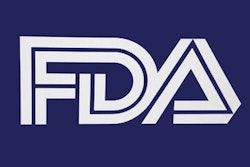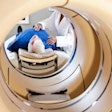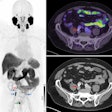
The U.S. Food and Drug Administration (FDA) has granted clearance for an vitro diagnostic test that could compete with PET for assessing whether individuals have amyloid plaque buildup associated with Alzheimer's disease.
The FDA granted clearance under its breakthrough device pathway to the Lumipulse G β-Amyloid Ratio (1-42/1-40) test from Fujirebio Diagnostics. The test is designed to measure the ratio of β-amyloid 1-42 and β-amyloid 1-40, proteins that can accumulate and form plaques in the brain. Concentrations of these proteins can be detected in cerebral spinal fluid (CSF).
The assay can help physicians determine whether a patient is likely to have amyloid plaques, which are widely seen as an indication of Alzheimer's disease. In announcing the clearance, the FDA said that results of the assay are similar to what could be seen in a PET scan, and a negative result on the IVD test is consistent with a negative PET scan of amyloid concentration.
"A negative test result reduces the likelihood that a patient's cognitive impairment is due to Alzheimer's disease, enabling physicians to pursue other causes of cognitive decline and dementia," the FDA noted.
The FDA said it evaluated the safety and efficacy of the Lumipulse test in a clinical study that included 292 samples of CSF fluid that were acquired as part of the Alzheimer's Disease Neuroimaging Initiative. These samples were tested with the Lumipulse G β-Amyloid Ratio test and compared to results from PET scans.
In all, 97% of individuals who had positive results with the Fujirebio assay also had positive amyloid accumulation that was visible on PET scans, and 84% of people with negative results on the assay also had negative PET scans.
The main risk of the Fujirebio assay is that it could generate false-positive and false-negative results, according to the FDA, which could lead to psychological distress, delays in receiving a correct diagnosis, and expense and risk from unnecessary treatment. For this reason, the agency has advised using the assay in conjunction with other tests.




















